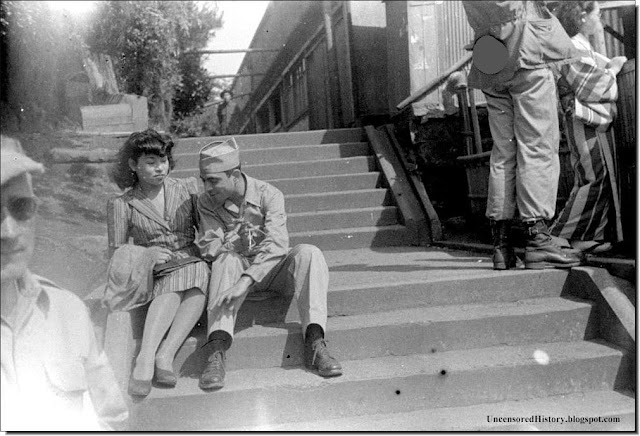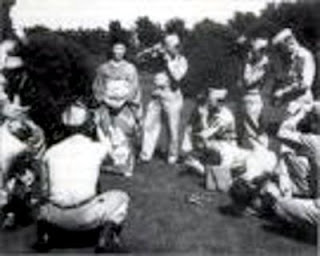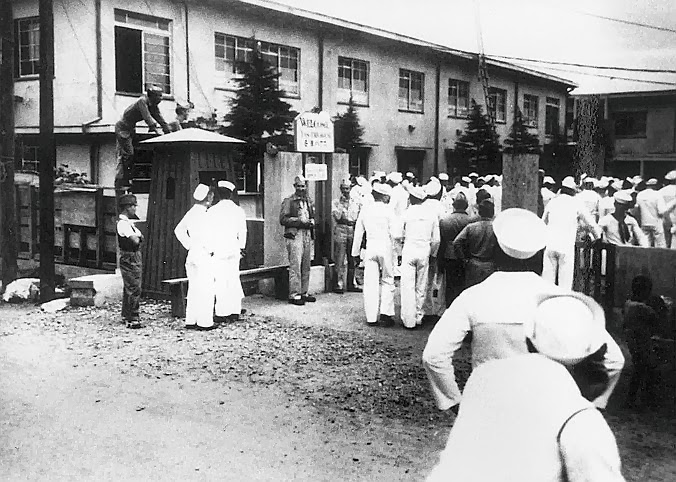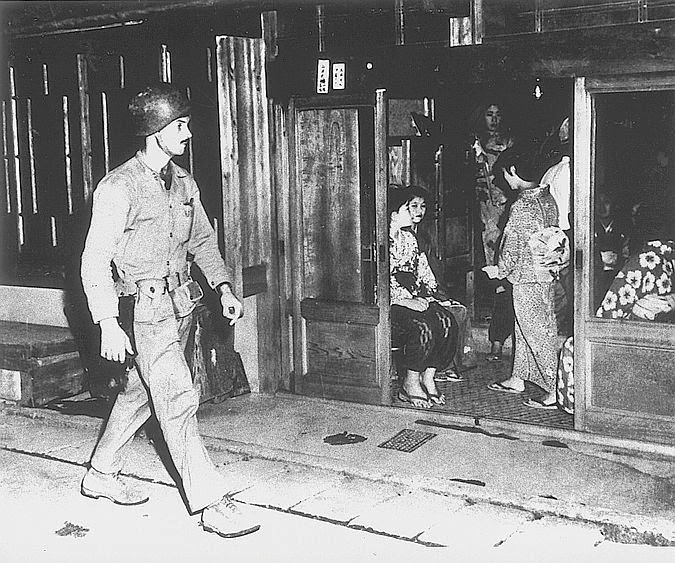Rape And Abuse of Japanese Women By American Soldiers During WW2

“We too are an army of rapists,”
anonymous soldier, letter to the editor, Time Magazine, November 12, 1945.
In Hollywood movies we have seen the bad man from the SS raping (or attempting to) a beautiful lady (French, British or American). Lately we are increasingly learning of the mass rape of German women by the Red Army hordes in 1945. We have heard of the bad black French colonial troops raping German women in Stuttgart in 1945. Now a lesser reported event of the brutal WW2..... Rape of Japanese women by GIs during the end of the war and during the occupation of Japan......
Japanese historian Oshiro Masayasu writes about the large scale rape by American soldiers in Okinawa in 1945. He reports the incident at a village in Motobu peninsula where GIs landed and found only women, children and old folks there. What followed was abominable. There was a hunt in broad daylight for Japanese women who were ravaged mercilessly.

There is no documentary evidence that mass rape was committed by Allied troops during the Pacific War. There are, however, numerous credible testimony accounts which allege that a large number of rapes were committed by US forces during the Battle of Okinawa in 1945.
Okinawan historian Oshiro Masayasu (former director of the Okinawa Prefectural Historical Archives) writes based on several years of research:
Soon after the U.S. marines landed, all the women of a village on Motobu Peninsula fell into the hands of American soldiers. At the time, there were only women, children and old people in the village, as all the young men had been mobilized for the war. Soon after landing, the marines "mopped up" the entire village, but found no signs of Japanese forces. Taking advantage of the situation, they started "hunting for women" in broad daylight and those who were hiding in the village or nearby air raid shelters were dragged out one after another.
According to Toshiyuki Tanaka, 76 cases of rape or rape-murder were reported during the first five years of the American occupation of Okinawa. However, this is probably not the true figure, as most cases went unreported.
In 1998 the remains of three U.S. Marines stationed on Okinawa were discovered outside of a local village. Accounts from elderly Okinawans claim that the 3 marines had made frequent trips to the village to rape the women that lived there, but were ambushed and killed by dozens of villagers with the help of 2 armed Japanese soldiers who were hiding in the jungle, in a dark narrow mountain pass near a river on one of their return trips. "The Japanese soldiers shot at the marines from the bushes and several dozen villagers beat them to death with sticks and stones." According to the same article, one academic claims that "rape was so prevalent that most Okinawans over age 65 either know or have heard of a woman who was raped in the aftermath of the war."
Source;
Yuki Tanaka/Toshiyuki Tanaka, Japan's Comfort Women: Sexual Slavery and Prostitution During World War II, p. 110-111.
--------------------------------
Some women were also raped when they went to US camps to receive food hand-outs.
---------------------------------------------
According to a survey conducted by a feminist group in Okinawa – Okinawan Women Act Against Military Violence – US troops landed on Zamami Island, a small island west of the main island, and began raping women there in March 1945, shortly after they had landed. They abducted the women, carried them one by one to deserted coastal areas and gang-raped them. After being raped, the women were allowed to go. There is also a testimony that some Okinawan nurses and local women patients who had been admitted to the US Field Hospital were raped by US soldiers. One of the victims, a young girl patient, was raped by a GI in front of her father who was in the tent attending to her.These victims had nowhere to report the crime even if they had wished to do so, the Japanese police system of Okinawa having completely collapsed during the battle.
The rape of Okinawan women by American soldiers continued even after the war officially ended and there are many incidents in which American soldiers took young girls from civilian houses at gunpoint. These girls would later return with their clothes torn off. Some were even killed, although the perpetrators were never caught. As a result, villagers throughout Okinawa used a warning signal of banging on pots and pans to warn of approaching American troops. On hearing this, girls would hide until all was clear. Some women were also raped when they went to US camps to receive food hand-outs. During the first five years of the American occupation of Okinawa, 76 cases of murder or rape-murder were reported. This number was but the tip of the iceberg, as most cases went unreported.
Tanaka Page 133
---------------------------
Two rape cases were reported in Yokosuka on August 30, the day that the US marines landed there. At about 11:00 am, only a few hours after the landing began and three hours before General MacArthur stepped out of his plane at Atsugi airport,two marines on an “inspection tour” entered a civilian house in Yokosuka, and raped a 36-year-old mother and her 17-year-old daughter at gunpoint. About 6:00 pm that day, two other marines entered another home in Asahi-chd and found a housemaid at home alone. While one of the marines was on watch at the door, the other made lewd gestures and tried to grab her. In fear she fled upstairs. The marines followed and raped her in turn in a small room upstairs.
----------------------------------------
On August 31, a US Marine advance party landed at Tateyama in Chiba prefecture. Three days later the US occupation forces to be stationed in Chiba arrived there under the command of General A. Cunningham. On September 1, many small groups of marines from this advance party visited villages nearby and entered some public buildings and private houses, claiming that they were conducting “inspections.” The following are some of the incidents that occurred at that time and were eventually reported to the Adjutant General’s Office of the GHQ through the CLO:
1 Around 12:30 am on September 1, three American soldiers intruded in to
the house of Mr. B. I., [the details of the address], Awa district in Chiba
prefecture. These intruders showed something like a ten yen bank note to
the housewife N., 28 years old and claimed intimacy to her by making
gestures while upon receiving her flat refusal they brought her to the inner
room and raped her in succession.
2 At about 2:00 pm the same day another four American soldiers intruded
into the house of Mr. A. T., [the details of the address], the same village.
They threatened the wife, T. aged 30 as well as his mother and then chased
the three to the next room and one of the Americans violated T. in the first
place. But at that time another three American soldiers entered the
same house. They withdrew from the house without attaining their intended
purposes satisfactorily.
3 At the same hour on that day seven American soldiers while ransacking the
village office in Nishiki village, resorted to indecent acts such as touching
breasts of the girl clerks or rubbing their cheeks.
4 Another several Americans resorted to the same acts to the girl clerks in the
post office located in the same village
-----------------------------------------
GANG RAPE BY AMERICAN SOLDIERS
About 6 o’clock, in the afternoon of September 1st, two American soldiers
in a truck forced two Japanese to guide them around the Yokohama city.
When they came to Shojikiro, at Eirakucho, Naka-ku they forced Miss
K. Y., aged 24, a maidservant, to board the truck against her will and
absconded to the US Barracks in Nogeyama Park. There altogether 27 of
the American soldiers violated her in turn and rendered her unconscious,
though she later recovered her consciousness through the care of some other
American soldiers and was sent home on September 2nd.
------------------------------------
There were also 1,336 reported rapes during the first 10 days of the occupation of Kanagawa prefecture after the Japanese surrender.
Source;
Schrijvers, Peter (2002). The GI War Against Japan. New York City: New York University Press. p. 212. ISBN 0814798160.
Some how the Japanese population who wasn't part of the military and gov't had it coming. Wow the thinking of posters here.











